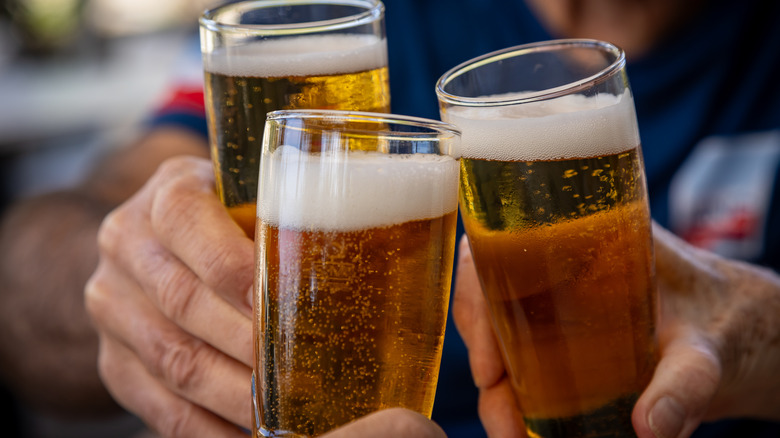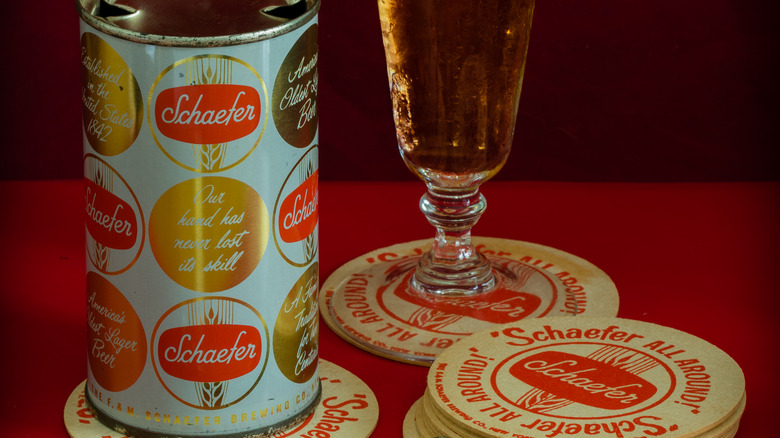This Old-School Lager Isn't As Popular As It Once Was
Today, American beer culture is generally divided between mass-market lagers and pilsners and the modern wave of craft breweries. Yet North-American beer brewing history predates the U.S. itself. Up until the passage of Prohibition in 1920, the American beer scene thrived, until the ban of alcohol sales forced most breweries into closure. Many of such large-scale operations — like Coors, Anheuser-Busch, and Yuengling — continue to be industry standards today. And another once-popular brewery that endured through the times was the F. & M. Schaefer Brewing Company.
Known for its easy-drinking lager, Schaefer beer was widely consumed well into the 1970s. The beverage wasn't known for its flavor — Redditors recall the beer tasted watery and "like uncooked dough" — but rather as a go-to option in casual contexts. Yet impressively, the brewery served Americans for well over a century, initially opening in New York City in 1842. F. & M. Schaefer Brewing Company's second Brooklyn-based location alone survived Prohibition, operating from 1916 until 1976.
A key to Schaefer's former success was its marketing. Various 1970s advertisements promoted a jingle unique to the beer, and the brewery even backed the Dodgers baseball team, until the sports franchise moved away from Brooklyn. Unfortunately, the original family owners sold the Schaefer brewery in 1981, and a subsequent series of mergers forced Schaefer into obscurity. Now, it's a fragment of beer history nearly eliminated, joining the lineage of once-popular beers that are nearly impossible to find outside of specific regional markets.
Industry giants forced Schaefer into obscurity
Operating for over 130 years, the F. & M. Schaefer Brewing Company endured a multitude of ups and downs. Started by the descendants of German immigrants, clever management navigated many challenges. The company survived Prohibition through ice production, creating dyes, and non-alcoholic products. By the time of repeal, Schaefer's lager was among the first releases, even appearing in the first post-Prohibition beer newspaper ad.
Its low-ABV flagship brew immediately found commercial success, magnified by successful branding and marketing. A unique approach for 20th-century breweries, this cemented its lager into the cultural zeitgeist for decades to come. The Schaefer appealed to sports fans, youth, and those seeking a go-to for parties. Nobody was worrying about the proper beer pour with this one; it was meant for crushing, not savoring.
Unfortunately, the good times started winding down at the end of the 1970s. Production shifted, with the massive Brooklyn facility closing in 1976 and operations consolidating largely in Allentown, Pennsylvania. The still family-owned operation sold to Stroh Brewing in 1981. This company eventually became acquired by Pabst Blue Ribbon. During the last few decades of the 20th century, the lager became increasingly niche and subsequently, faded out of the public's eye. Unexpectedly, Pabst Blue Ribbon revived the brand in 2020, hiring a brewery called F.X. Matt to recreate a beer of the same style. An equally mild, low-in-alcohol, and refreshing beer, it's an ode to a lager that once dominated social contexts.


